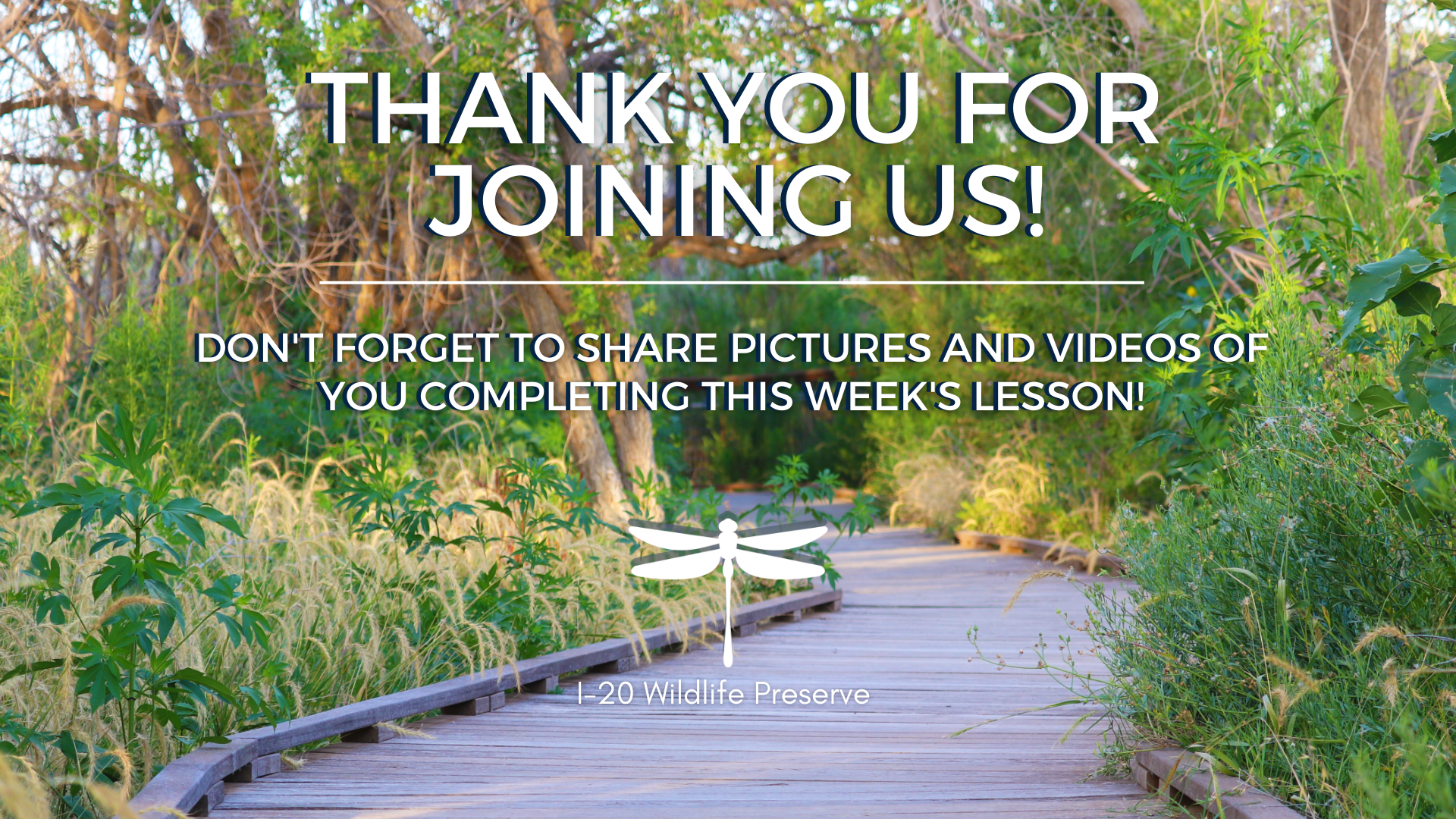Bird Breakfast
A WILD at The Preserve Lesson
Outdoor Education
WILD Curriculum
Let's learn about birds, their beaks, and the breakfast's that they eat!
Dive into the Lesson
Bird's beaks are often adapted to the specific food they eat. A hummingbird has a long beak so it can drink up nectar and a pelican has a special beak for scooping fish out of the water. Kari and MJ our WILD educators, tell us more about birds, their beaks, and the food they eat in this video!
WILD Words - Vocabulary
Did you know vocabulary growth is directly related to school achievement? The size of a child's vocabulary in Kindergarten can predict their ability to read. Navigate the slides above to learn this lesson's WILD WONDERFUL WORDS. You can navigate by hovering your mouse above the image until the arrows on the sides and the dots on the bottom right appear. You may click through using the arrows, or you may jump to a specific slide with the dots. Otherwise, the slides will shuffle through on their own. After discussing the meaning of each word, find opportunities to use these new vocabulary words throughout the week.
WILD Activity
Did you know that bird watching reduces stress and blood pressure? It can even help improve your quality of sleep. Some studies show it also sharpens concentration enhancing your ability to focus. Plus its really fun to observe the diversity of birds in your region! In this video, Kari and Mariel show us how to make our own pair of binoculars from recycled materials. Then they demonstrate a fun activity that gets us active and shows how different birds move.
Additional Resources
To download this lesson’s nature journal entry click here. (right click the image to save to your device)
If you haven’t downloaded the nature journal cover yet, you can find it here.
Kari sits with her chickens and reads us one of her favorite books about birds! (Written by: Kevin Henks & Illustrated by: Laura Dronzek)
Here is a quick and easy activity to attract wildlife to your own backyard!
The Association of Fish & Wildlife Agencies shares fun activities you can do at home!
Watch live feed of a falcon nest shared by the University of Texas!








